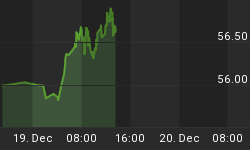The raison d'être of investment or wealth management is to maintain, or hopefully improve, one's standard of living, i.e. to earn a real return on the investment amount. This sounds easy enough if one considers that the S&P 500 Index (and its predecessors prior to 1957) delivered a nominal return of 8.8% per annum from January 1871 to October 2011. With an average inflation rate of 2.2% per annum over the period, this meant a real return of 6.6% per annum.
Yes, I can hear many readers arguing that much better returns can be generated by "playing" the market cycles, especially given the fact that the S&P 500 has made no headway since 1998. Ah, the art of market timing! But keep in mind that very few people have succeeded in consistently outperforming the market over any extended period of time, especially once costs and taxes are factored in.
Let's go back to the total nominal return of 8.8% per annum and analyze its components. We already know 2.2% per annum came from inflation. Real capital growth (i.e. price movements net of inflation) added another 1.9% per annum. Where did the rest of the return come from? Wait for it, dividends - yes, boring dividends, slavishly reinvested year after year, contributed 4.6% per annum. This represents more than half the total return over time!
Have a look at the following chart:
The numbers are summarized below in table format.

Source: Plexus Asset Management (basedon data from Prof Robert Shiller and I-Net Bridge).
In an environment characterized by increasingly shorter investment horizons, the concept of compounding sounds so passé, but it remains one of the most important principles governing investment. The time has perhaps come to look beyond the short-term noise and focus on good old stock picking, and specifically those companies with strong balance sheets that will be growing their dividends over time with a reasonable degree of certainty. After all, compound growth has not without reason been referred to as the eighth wonder of the world.
















